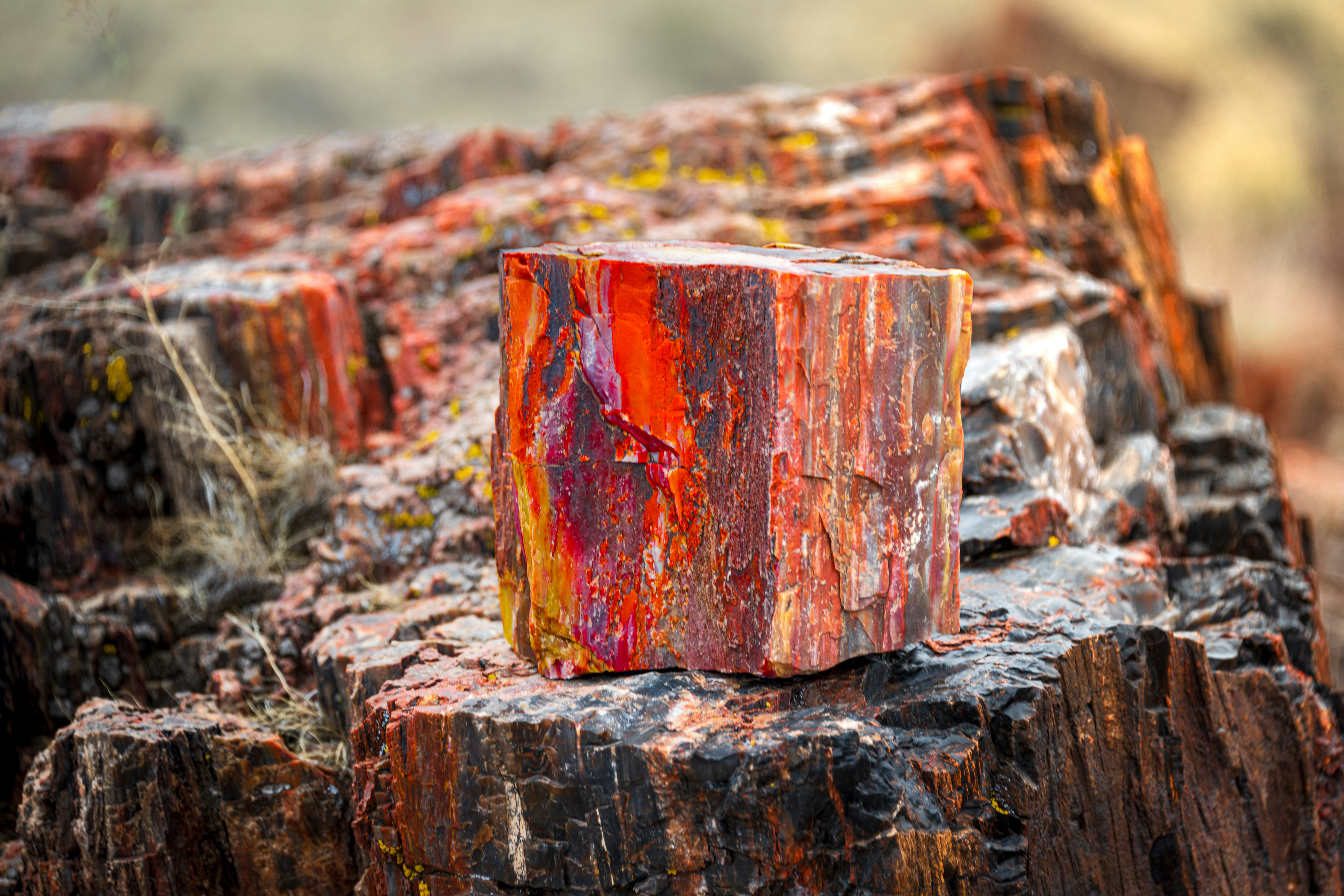FOREVER THE FOREST
Minerals of the Amazon Rainforest
Rich Resources with Global Significance
The Amazon rainforest, often referred to as the “lungs of the Earth,” is renowned for its unparalleled biodiversity and ecological importance. However, beneath its dense canopy lies another treasure: an abundance of valuable minerals that play a vital role in the global economy. From iron and gold to rare earth elements, the Amazon is a hotspot for mineral wealth. This article explores the key minerals found in the Amazon, their characteristics, uses, and the challenges associated with their extraction.
 1. Iron Ore: The Backbone of Modern Industry
1. Iron Ore: The Backbone of Modern Industry
The Amazon is home to one of the largest iron ore deposits in the world, located in the Serra dos Carajás in the state of Pará, Brazil. Carajás is renowned for its high-grade iron ore, which contains an average of 65% iron content—a quality that surpasses many other global sources.
Characteristics:
- Composition: High-grade hematite and magnetite.
- Color: Reddish-brown, often with a metallic luster.
- Hardness: Ranges from 5.5 to 6.5 on the Mohs scale.
Uses:
Iron ore is essential in steel production, which is the backbone of construction, automotive manufacturing, and numerous other industries. The quality of the iron ore from Carajás makes it especially sought after for industrial applications worldwide.
 2. Bauxite: The Source of Aluminum
2. Bauxite: The Source of Aluminum
Bauxite, the primary ore used in aluminum production, is another significant mineral found in the Amazon. The Paragominas and Trombetas regions in Pará are key areas of bauxite extraction.
Characteristics:
- Composition: Contains hydrated aluminum oxides, along with impurities like iron oxides and silica.
- Color: Ranges from off-white to reddish-brown.
- Texture: Often soft and earthy.
Uses:
Bauxite is processed into alumina and then smelted to produce aluminum, a lightweight and corrosion-resistant metal used in packaging, transportation, construction, and renewable energy systems such as solar panels and wind turbines.
 3. Gold: The Allure of Wealth
3. Gold: The Allure of Wealth
Gold has long been a symbol of wealth and power, and the Amazon region is rich in gold deposits. Major gold mining activities are concentrated in the Tapajós region and along riverbeds throughout the rainforest.
Characteristics:
- Composition: Pure gold is a soft metal but is often alloyed with other metals like silver or copper.
- Color: Bright yellow with a metallic sheen.
- Density: Extremely high, making it one of the densest elements on Earth.
Uses:
Gold is used in jewelry, electronics, dentistry, and as an investment asset. Its conductivity and resistance to tarnish make it indispensable in high-tech industries.
 4. Manganese: Strengthening Steel
4. Manganese: Strengthening Steel
Manganese is critical in steel production, acting as an alloying agent to enhance hardness and durability. The Amazon has significant manganese deposits, particularly in the Amapá region.
Characteristics:
- Composition: Manganese oxides and silicates.
- Color: Black to dark gray.
- Hardness: 6 on the Mohs scale.
Uses:
Apart from steel production, manganese is used in batteries, fertilizers, and as a pigment in ceramics and glass. Its versatility makes it a crucial industrial mineral.
 5. Copper: Conducting the Modern World
5. Copper: Conducting the Modern World
Copper deposits in the Amazon, particularly in the Carajás Mineral Province, are highly significant. Copper is a fundamental element in electrical and electronic applications.
Characteristics:
- Composition: Native copper is often found in association with sulfides.
- Color: Reddish-brown with a metallic sheen.
- Conductivity: Excellent electrical and thermal conductivity.
Uses:
Copper is indispensable in electrical wiring, plumbing, renewable energy technologies, and electronic devices. Its recyclability further enhances its global value.
 6. Nickel: A Versatile Mineral
6. Nickel: A Versatile Mineral
Nickel is another key mineral extracted from the Amazon region, particularly in Pará. It is prized for its resistance to corrosion and ability to form alloys.
Characteristics:
- Composition: Nickel is found in sulfide ores and lateritic deposits.
- Color: Silvery-white with a slight golden hue.
- Hardness: 4 on the Mohs scale.
Uses:
Nickel is used in stainless steel production, batteries (particularly for electric vehicles), and electroplating. Its role in the green energy sector has significantly increased demand.
 7. Cassiterite: The Source of Tin
7. Cassiterite: The Source of Tin
Cassiterite, the primary ore of tin, is found in regions like Rondônia. Tin has been an essential material for centuries, particularly in the production of bronze.
Characteristics:
- Composition: Tin dioxide (SnO2).
- Color: Brown to black with an adamantine luster.
- Hardness: 6 to 7 on the Mohs scale.
Uses:
Tin is widely used in soldering, coating other metals to prevent corrosion, and as an alloying agent in bronze. It is also used in glass production.
 8. Diamonds: Nature’s Precious Gemstones
8. Diamonds: Nature’s Precious Gemstones
While not as abundant as other minerals, diamonds are occasionally found in alluvial deposits in the Amazon. These gemstones have captivated human interest for centuries.
Characteristics:
- Composition: Pure carbon in a crystalline structure.
- Color: Colorless or various hues depending on impurities.
- Hardness: 10 on the Mohs scale, making it the hardest natural material.
Uses:
Diamonds are primarily used in jewelry, but industrial-grade diamonds are essential for cutting, drilling, and grinding tools.
 9. Nióbio: A Strategic Mineral
9. Nióbio: A Strategic Mineral
Brazil holds the majority of the world’s niobium reserves, and the Amazon contributes to this dominance. Niobium is a critical component in high-strength steel alloys.
Characteristics:
- Composition: Found in minerals like pyrochlore and columbite.
- Color: Grayish-white with a metallic sheen.
- Density: High, with excellent ductility.
Uses:
Niobium is used in jet engines, superconducting magnets, and advanced electronics. Its role in aerospace and defense industries highlights its strategic importance.
10. Rare Earth Elements: The Hidden Treasures
Rare earth elements (REEs) are a group of 17 minerals essential for modern technologies. The Amazon has deposits of REEs, though they remain underexplored.
Characteristics:
- Composition: Includes elements like neodymium, lanthanum, and cerium.
- Color: Typically metallic gray.
- Properties: High magnetic and optical properties.
Uses:
REEs are critical for renewable energy (wind turbines, solar panels), electronics (smartphones, computers), and defense technologies (radar systems, guided missiles).
Environmental and Social Challenges of Mining in the Amazon
While the Amazon’s mineral wealth is vast, its extraction poses significant environmental and social challenges:
- Deforestation: Mining often requires clearing large areas of rainforest, leading to habitat loss and reduced biodiversity.
- Water Pollution: Mercury and other chemicals used in mining contaminate rivers, affecting aquatic life and communities reliant on these waters.
- Indigenous Rights: Mining activities often encroach on Indigenous lands, threatening their way of life and violating legal protections.
- Illegal Mining: Unregulated mining operations exacerbate environmental damage and undermine efforts for sustainable development.
- Carbon Emissions: Mining and processing minerals contribute to greenhouse gas emissions, contradicting global climate goals.
Striking a Balance
The minerals of the Amazon hold immense value for global industries and technological advancement. However, the environmental and social costs of their extraction cannot be overlooked. Sustainable mining practices, stricter regulations, and respect for Indigenous communities are essential to strike a balance between economic development and environmental preservation. The Amazon’s resources, if managed responsibly, can benefit humanity while safeguarding one of the planet’s most vital ecosystems.



 1. Iron Ore: The Backbone of Modern Industry
1. Iron Ore: The Backbone of Modern Industry 2. Bauxite: The Source of Aluminum
2. Bauxite: The Source of Aluminum 3. Gold: The Allure of Wealth
3. Gold: The Allure of Wealth 4. Manganese: Strengthening Steel
4. Manganese: Strengthening Steel 5. Copper: Conducting the Modern World
5. Copper: Conducting the Modern World 6. Nickel: A Versatile Mineral
6. Nickel: A Versatile Mineral 7. Cassiterite: The Source of Tin
7. Cassiterite: The Source of Tin 8. Diamonds: Nature’s Precious Gemstones
8. Diamonds: Nature’s Precious Gemstones 9. Nióbio: A Strategic Mineral
9. Nióbio: A Strategic Mineral